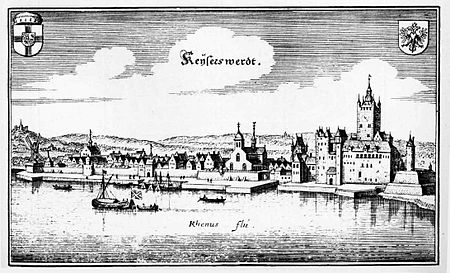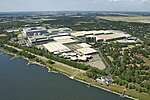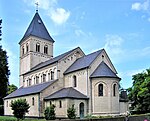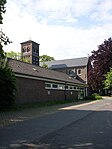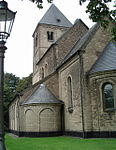Kalkum Castle is a water castle in the district of the same name in the north of Düsseldorf about two kilometers northeast of Kaiserswerth and an extraordinary example of Classicism in the Rhineland. Together with the associated castle park, it has been a listed building since January 1984.
Originating from one of the oldest knights' seats in the region, the ancestral seat of the knightly-born lords von Kalkum, the property passed to the lords von Winkelhausen around the middle of the 15th century, who were to determine the fate of the estate for the following 300 years. Modified in the 17th century into a castle in the Baroque style, the complex was given its current external appearance mainly through a classicist conversion between 1808 and 1814 based on designs by the Krefeld master builder Georg Peter Leydel. He connected the outer bailey and the manor house by inserting intermediate buildings to form a closed four-winged complex. At the same time, under the direction of landscape architect Maximilian Friedrich Weyhe, a palace park was laid out in the English landscape style. In 1817, the main gate was extended by the architect Johann Peter Cremer. The interior of the palace was designed by the decorative painter Ludwig Pose.
Kalkum became known far beyond the borders of Prussia as a result of the divorce war between the castle owner Count Edmund von Hatzfeldt and his wife Sophie, who was represented by Ferdinand Lassalle, who was only 20 years old at the time. Today, a memorial in a tower-like pavilion on the eastern wall of the palace park commemorates him. After the World War II, the buildings were initially used as refugee accommodation, then as a training center for home workers. The complex was then restored from 1954 to 1966 and converted for use as an archive. In the process, the classicist living and social rooms of the manor house were restored.
Today, the palace is empty because the Branch of the State Archives of North Rhine-Westphalia, which was housed there for a long time, moved to the new Landesarchiv building in Duisburg at the end of 2014. However, the facility is still used for classical concerts and other cultural events. The approximately 19 hectare large palace park is open to the public.
